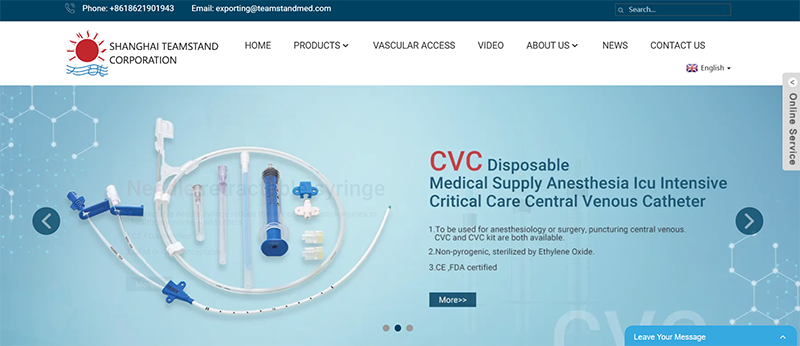China has become a significant global hub for manufacturing and exporting medical devices. With a broad range of products and competitive pricing, the country attracts buyers worldwide. However, importing medical devices from China involves several critical considerations to ensure compliance, quality, and efficiency. Here are six key practices to follow when importing medical devices from China.
1. Understand Regulatory Compliance
Before importing, it’s essential to understand both local and international regulations. Many countries, including the U.S. and European Union members, require medical devices to meet stringent standards. This means any medical device you import from China must comply with these regulations to ensure patient safety and product quality. Common certifications to check for include:
- FDA Approval for devices entering the U.S. market.
- CE Marking for devices intended for the European Union.
- ISO 13485 Certification, which covers quality management systems specifically for medical devices.
Request certifications from potential suppliers early in the negotiation process. Verifying the certifications can save you time and potential regulatory hurdles.
Shanghai Teamstand Corporation is a professional supplier and manufacturer with rich experience, and most of our products are CE, ISO13485, FDA approval, and our products are exported to many countries in all over the world.
2. Check the Supplier’s Experience and Reputation
The supplier’s experience in manufacturing medical devices is crucial. Choosing a supplier with a strong track record in the medical device industry helps ensure they understand the quality requirements and standards expected in your market. Here are some steps to assess the supplier’s reliability:
- Ask the supplier to provide the name of clients they worked before.
- Ask the suppliers if they have experience exporting to your markets before.
- Visit their factory or office. If possible, to see their manufacturing processes and quality control systems firsthand.
Working with experienced suppliers increases the likelihood of getting compliant and high-quality devices.
3. Evaluate Product Quality and Conduct Due Diligence
Quality is non-negotiable when it comes to medical devices, as these products directly impact health and safety. Conducting due diligence includes:
- Reviewing samples to assess product quality before placing a large order.
- Requesting a third-party inspection through agencies like SGS or TÜV, which can inspect products at various stages, from production to pre-shipment.
- Conducting lab testing if applicable, especially for more complex or high-risk devices, to verify that they meet your country’s quality standards.
Consistent communication with the supplier about quality expectations and regular inspections can help prevent quality-related issues.
4. Understand Payment Terms and Financial Security
Clear payment terms protect both you and the supplier. Chinese suppliers generally prefer a deposit before production and the remaining balance before shipment. Some safe payment options include:
- Letter of Credit (L/C): This offers protection for both parties and is recommended for larger orders.
- Telegraphic Transfer (T/T): Although commonly used, it requires trust as it involves advance payments.
Ensure you understand the supplier’s payment terms and include clear agreements on refunds or returns in case of quality or delivery issues.
5. Plan for Logistics and Shipping Details
Medical devices require proper handling and often need special packaging to ensure they arrive undamaged. Collaborate with your supplier and logistics provider to understand shipping options, customs requirements, and documentation. Some tips to consider include:
- Choosing the right Incoterms (e.g., FOB, CIF, or EXW) based on your budget and logistics experience.
- Verifying packaging and labeling standards that comply with both Chinese and importing country regulations.
- Preparing for customs clearance by ensuring all documents are accurate, including certificates, invoices, and packing lists.
Selecting an experienced logistics partner can help smooth the customs clearance process and reduce unexpected delays.
6. Develop a Risk Management Strategy
Importing from abroad, especially in the medical field, comes with inherent risks. Some potential risks to consider are delays, quality issues, or regulatory changes. Implementing a risk management plan is essential to mitigate these risks:
- Diversify your suppliers to avoid over-reliance on a single source. This provides backup options if issues arise with one supplier.
- Establish a contingency plan for unexpected delays, such as keeping extra stock or working with local suppliers when possible.
- Stay updated on regulatory changes that may impact your import process or the specifications of devices allowed in your market.
Proactively managing risks can save time, money, and protect your business reputation in the long term.
Conclusion
Importing medical devices from China offers cost advantages, but it requires careful planning and vigilance to ensure product quality and regulatory compliance. By following these six practical steps—focusing on compliance, supplier reputation, quality assurance, payment security, logistics planning, and risk management—you can establish a smooth, reliable import process. Partnering with a reputable supplier like Shanghai Teamstand Corporation, a seasoned professional in the medical device field, can further help mitigate risks and provide peace of mind, ensuring that your imported medical devices meet high standards and reach your customers on time.
Post time: Nov-04-2024


